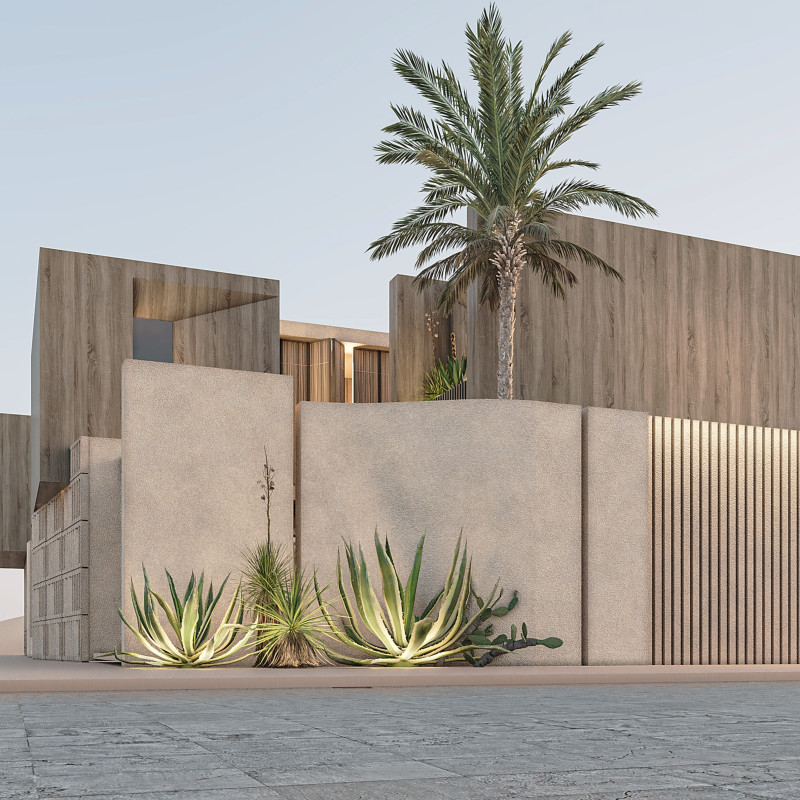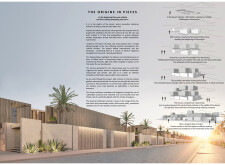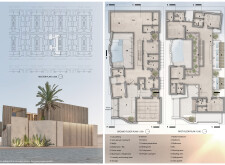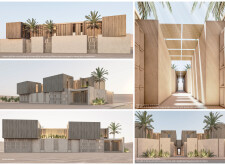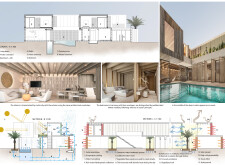5 key facts about this project
### Project Overview
Located in the desert region of Dubai, "The Origins in Pieces" integrates historical influences with contemporary design approaches to address local cultural and environmental conditions. The project emphasizes a fragmented architectural language that reflects the complexity of the urban context, aimed at fostering connections among various elements of the landscape and promoting interactions among inhabitants.
### Spatial Organization and User Experience
The design features a grid-like arrangement of interlocking volumes, facilitating a clear hierarchy between public and private spaces. Public areas, such as outdoor courtyards, serve as gathering spots that visually and functionally connect with the landscape, while private zones are organized around enclosed courtyards, ensuring a sheltered environment that balances natural light and ventilation. The circulation throughout the space mimics the traditional medina experience, where pathways and gardens create an exploratory environment, enhancing the residents' relationship with their surroundings.
### Material Selection and Sustainability
A focus on sustainable materiality defines the project, utilizing terracotta bricks for heat insulation, timber for modular construction, and concrete for structural integrity. Additionally, vegetable fiber panels provide natural shading, solar panels ensure energy efficiency, and hydroponic systems promote sustainable water usage. This strategic selection of materials is designed to withstand the climatic challenges of the desert while supporting environmental sustainability. The integration of systems for evaporative cooling and water harvesting further enhances the project's ecological performance, establishing a commitment to promoting a sustainable lifestyle in harmony with the desert landscape.


